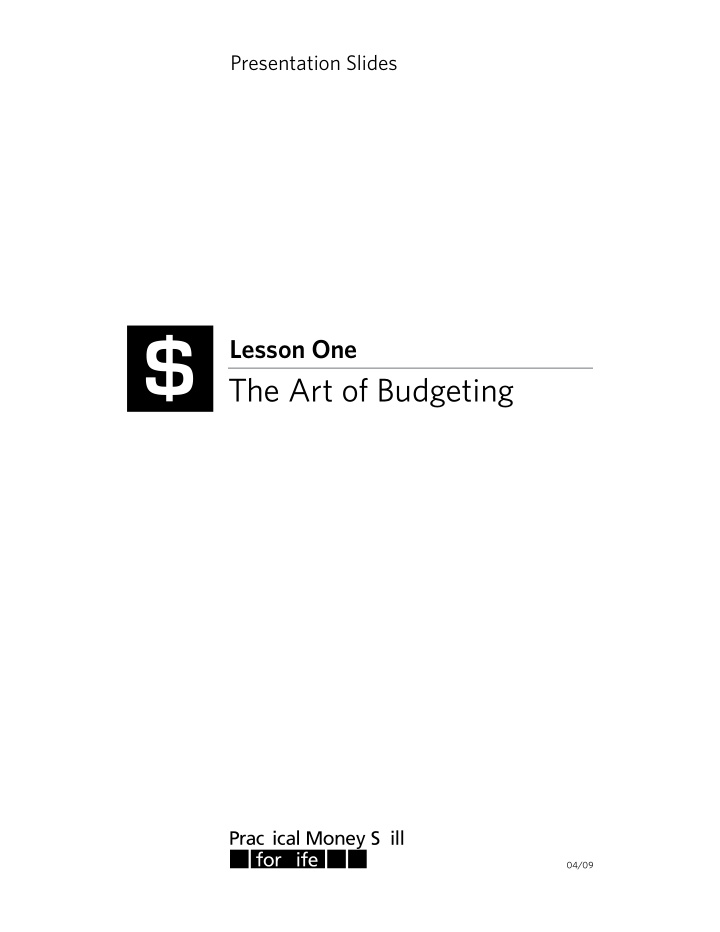



Presentation Slides $ Lesson One The Art of Budgeting 04/09
the budgeting process phase 1: Assess your personal and financial situation (needs, values, life situation). phase 2: Set personal and financial goals. phase 3: Create a budget for fixed and variable expenses based on projected income. phase 4: Monitor current spending (saving, investing) patterns. phase 5: Compare your budget to what you have actually spent. phase 6: Review financial progress and revise budgeted amounts. slide 1-A www.practicalmoneyskills.com the art of budgeting
goal-setting guidelines well-written personal and financial goals SHOULD: ■ be realistic A student working part-time is not likely to be able to afford a new car every couple of years. ■ be specific “I want to save $5,000 for a down payment to buy a house.” ■ have a timeframe “I want to pay off my credit card within the next 18 months.” ■ state the action to be taken “I want to start an automatic deposit savings account with monthly withdrawals from my checking account.” slide 1-B www.practicalmoneyskills.com the art of budgeting
setting up and maintaining a budget income budget actual difference Job #1 $ $ $ Job #2 $ $ $ Other $ $ $ total monthly income $ $ $ expenses budget actual difference fixed regular expenses Rent $ $ $ Car insurance $ $ $ Car payment $ $ $ Credit card $ $ $ fixed irregular expenses Savings $ $ $ Food $ $ $ Utilities $ $ $ transportation Bus fare $ $ $ Gas and oil $ $ $ Parking and tolls $ $ $ Repairs $ $ $ other Medical expenses $ $ $ Clothing $ $ $ Entertainment $ $ $ Household items $ $ $ Personal items $ $ $ Tuition $ $ $ School expenses $ $ $ total monthly expenses $ $ $ slide 1-C www.practicalmoneyskills.com the art of budgeting
Recommend
More recommend